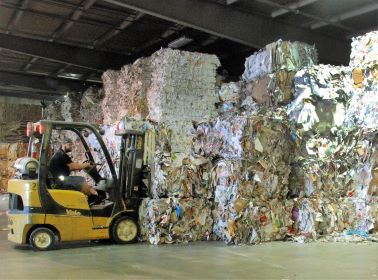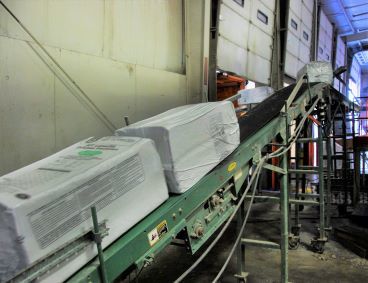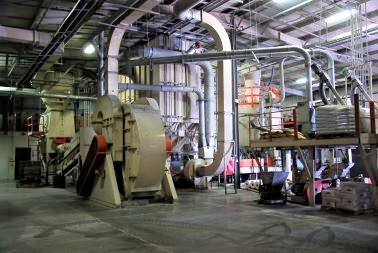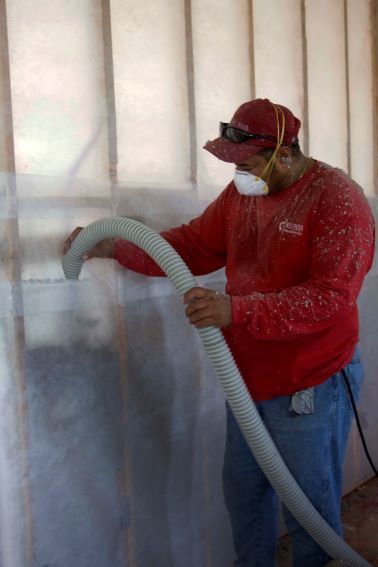How we make it greener AFT Carbon Smart™ Loose-Fill Cellulose Insulation

Utilize recycled content
Cellulose insulation is an inherently recycled product with 85%, or more, recovered content, most of which is postconsumer. A medium size cellulose insulation plant will convert three to five truckloads, or more, of recovered paper to energy-saving insulation each production shift. Since the primary feedstock -- recovered paper fibers -- is derived from trees cellulose insulation sequesters carbon in the walls and ceilings of homes for the life of the building.
Many cellulose insulation manufacturers have their own recycling programs and "paper drives" to collect paper and cardboard and use local community recycling programs as material sources. Here are hundreds of tons of waste paper that will not be landfilled , incinerated, or deinked using toxic chemicals. Instead, it, and its embodied carbon, will be sequestered in the walls and ceilings of homes, making them more energy-efficient.

Compression packaging and regional production
Recovered paper goes from potentially problematic trash to energy-saving insulation ready for shipment in just a few minutes in cellulose insulation plants.
Cellulose insulation is compressively packaged to 10x, or more, nominal settled density for maximum transportation efficiency. The compressive packaging allows for fewer deliveries and more cellulose insulation on the transportation vehicle compared to other types of insulation.

Low-energy manufacturing
Cellulose insulation manufacturing is a low-energy process, resulting in material with the least embodied energy of any of the commonly-used insulation products. The production process generates no waste, other than dust, which is confined within the production system and filtered out of air discharged to the environment. Fire retardants used in cellulose insulation are considered to be of low or no toxicity. Improvements in fire retardant processing and infusion technology have resulted in historically low fire retardant content with no loss of fire safety.
AFT recycles their dust back into the product. These companies produce no on-site air or solid waste pollution in the manufacturing process.


Be confident in cellulose insulation safety
Cellulose insulation is often installed in interior walls to make homes quieter and more fire safe.
Non-irritating cellulose insulation requires no special protective clothing during installation. Many cellulose insulation products have been tested for VOC emission and have been found to be low VOC sources.
Low carbon footprint homes
Cellulose insulation has been a preferred material for reinsulating walls in older homes. In many cases cellulose can be added to walls with existing, but inadequate, insulation.
AFT encourages a revolutionary new concept for creating energy efficient homes that offer the best solution to minimize energy consumption, reduce the amount of paper going to landfills and limit carbon emissions associated with construction and housing— Building lower carbon footprint homes.
New research on the use of wood-intensive construction and cellulose insulation products in homes shows it is actually possible to lower the carbon footprint of houses, so they become "carbon sinks" capable of sequestering carbon for the life of the dwelling. The carbon rich wood and cellulose wood fiber stays in the home for years effectively trapping the carbon from escaping into the environment.
Utilizing wood products and cellulose insulation with naturally high amounts of carbon in home building is a simple and highly effective method of lowering the carbon footprint of homes to sequester carbon. The role wood can play in mitigating climate change was specifically recognized as early as 2003 in the European Commission's 6th Environment Action Programme.

 SM Transparency Report (EPD)
SM Transparency Report (EPD)